The article below by Mehrdad Fakour on the Achaemenid Gardens was originally posted in the CAIS website in London hosted by Shapour Suren-Pahlav. A number of pictures posted below are not featured in the original CAIS posting
==========================
Since the first millenium B.C.E., the garden has been an integral part of Persian architecture, be it imperial or vernacular. In addition to written historical references, archaeological evidence of Achaemenid gardens exists at Pasargadae, Persepolis, Susa, and other sites (Xenophon, Oeconomicus 4.20-25; Arrian, Anabasis 5.29.4-5; Sâmî, pp. 75-77; Stronach, 1978, pp. 107-12; Pinder-Wilson, p. 85; Yamauchi, p. 332 and n. 55).
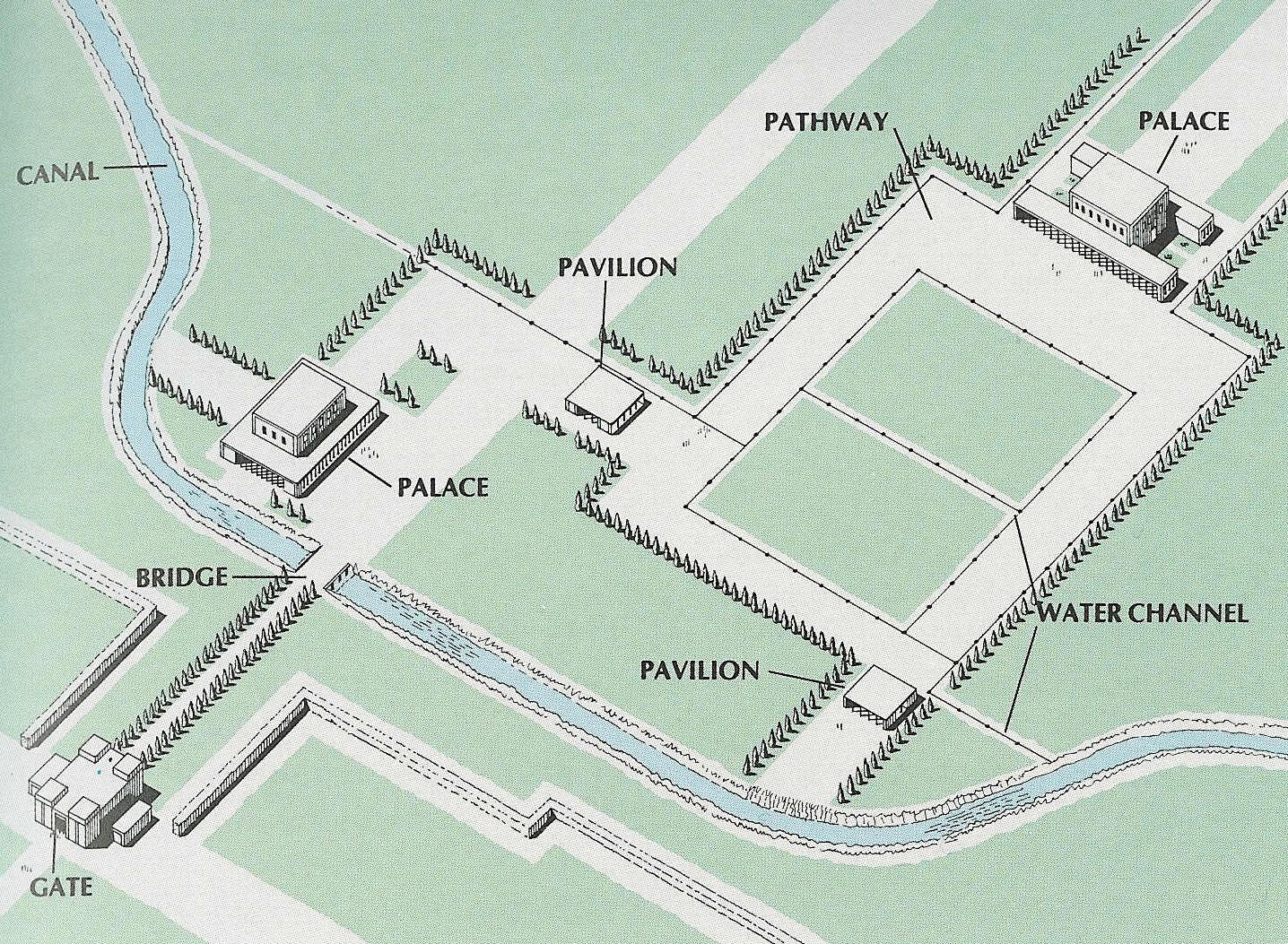 An overall top view of Pasargadae at Cyrus’ time. Note the canal, water channels; the two rectangles are gardens: for more see here…
An overall top view of Pasargadae at Cyrus’ time. Note the canal, water channels; the two rectangles are gardens: for more see here…
The Achaemenids had a keen interest in horticulture and agriculture. Their administration greatly encouraged the efforts of the satrapies toward innovative practices in agronomy, arboriculture, and irrigation. Numerous varieties of plants were introduced throughout the empire (Xenophon, Oeconomicus 4.8.10-12; Moynihan, pp. 11, 25).
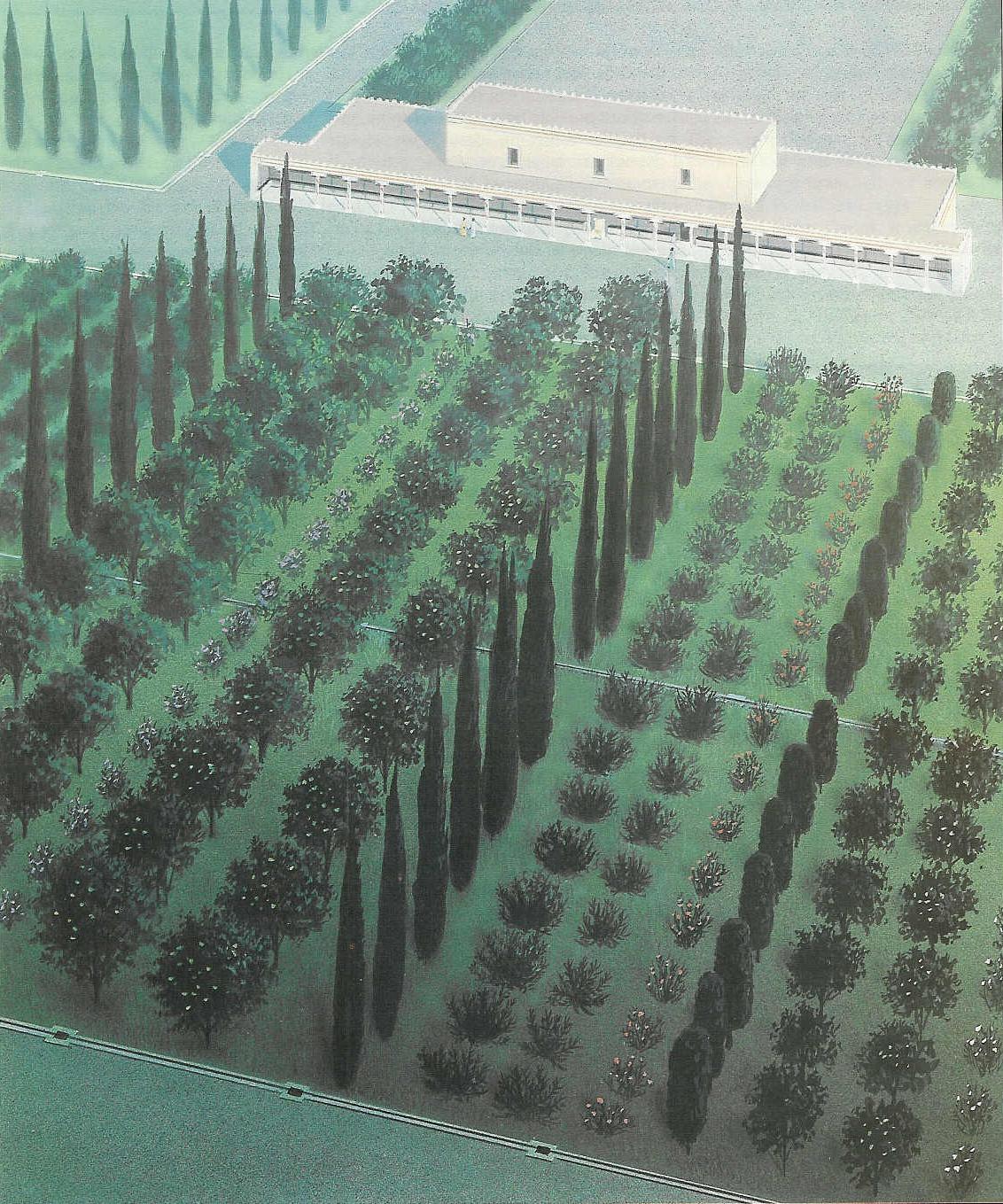 A top view of a reconstruction of the Persian Garden at Pasargadae (Source: CAIS). Note water channels at rim of garden – for more information see History Channel program “Engineering an Empire: The Persians“.
A top view of a reconstruction of the Persian Garden at Pasargadae (Source: CAIS). Note water channels at rim of garden – for more information see History Channel program “Engineering an Empire: The Persians“.
Aside from the practical aspects of the garden and its sensual pleasures, royal gardens also incorporated political, philosophical, and religious symbolism. The idea of the king creating a fertile garden out of barren land, bringing symmetry and order out of chaos, and duplicating the divine paradise on earth, constituted a powerful statement symbolizing authority, fertility, and legitimacy (Eliade, pp. 59-72; Moynihan, p. 20; Faqîh, p. 566; Stronach, 1990, pp. 171-80).
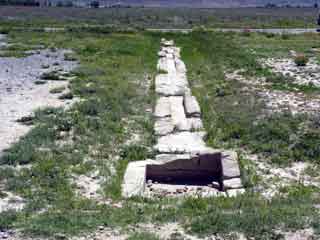 One of the remaining irrigation canals at Pasargadae (CAIS).
One of the remaining irrigation canals at Pasargadae (CAIS).
What made gardens special during the Achaemenid reign was that for the first time the garden became not only an integral part of the architecture, but was also the focus of it. Henceforth gardens were an integral part of Persian culture. Successive generations of European and Asian monarchs and garden lovers copied the concept and design of Persian gardens (Xenophon, Cyropaedia 5.3.7-13; idem, Oeconomicus 4.13-14; Moynihan, p. 2 and n. 19; Bazin, 1990, pp. 12-13).
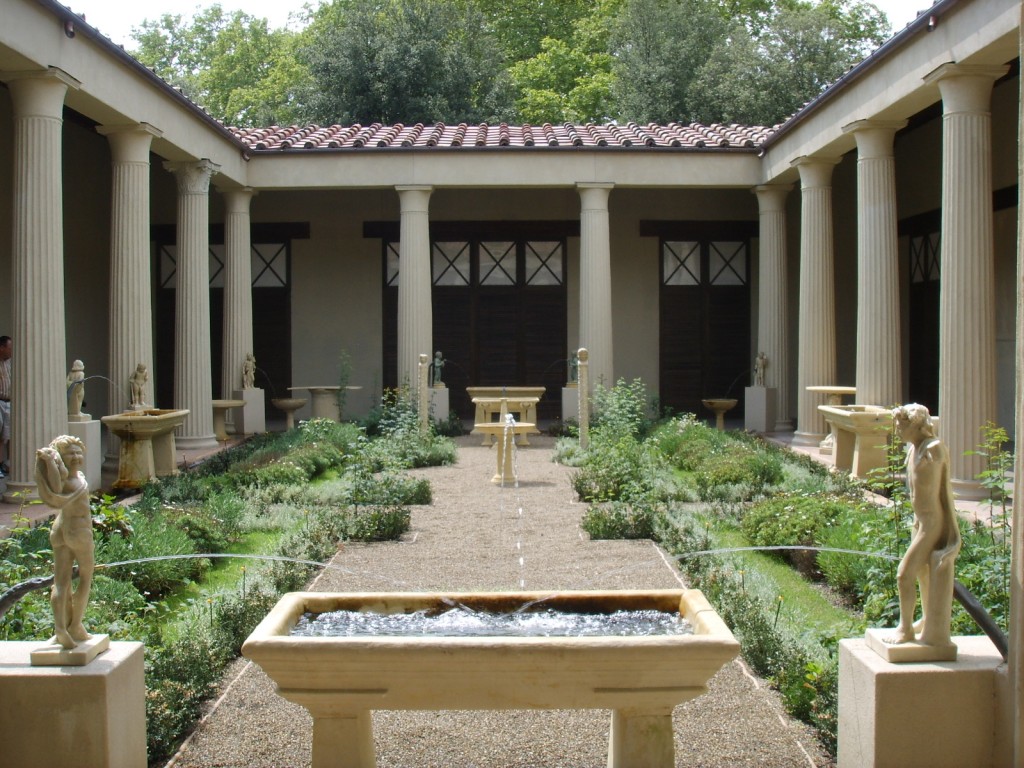 The Persian Gardens were to be adopted by the Greeks and later Romans; above is a reconstruction of the House of the Vettii and its garden in ancient Pompeii (Source: Public Domain).
The Persian Gardens were to be adopted by the Greeks and later Romans; above is a reconstruction of the House of the Vettii and its garden in ancient Pompeii (Source: Public Domain).
The earliest gardens on the Iranian plateau associated with the Achaemenids are located at Pasargadae, the royal park residence of Cyrus the Great (ca. 559-530 B.C.E.), the founder of the Persian empire. The royal palaces at Pasargadae were conceived and constructed as a series of palaces and pavilions placed among geometrically designed gardens, parterres, and meticulously hewn and dressed stone water-courses, set in a large formal park containing various flora and fauna. Recent studies suggest that this garden may have been the model for the subsequent chahârbâgh (q.v.) and hašt behešt (Stronach, 1978, pp. 107-12; idem, 1989, pp. 475-87).
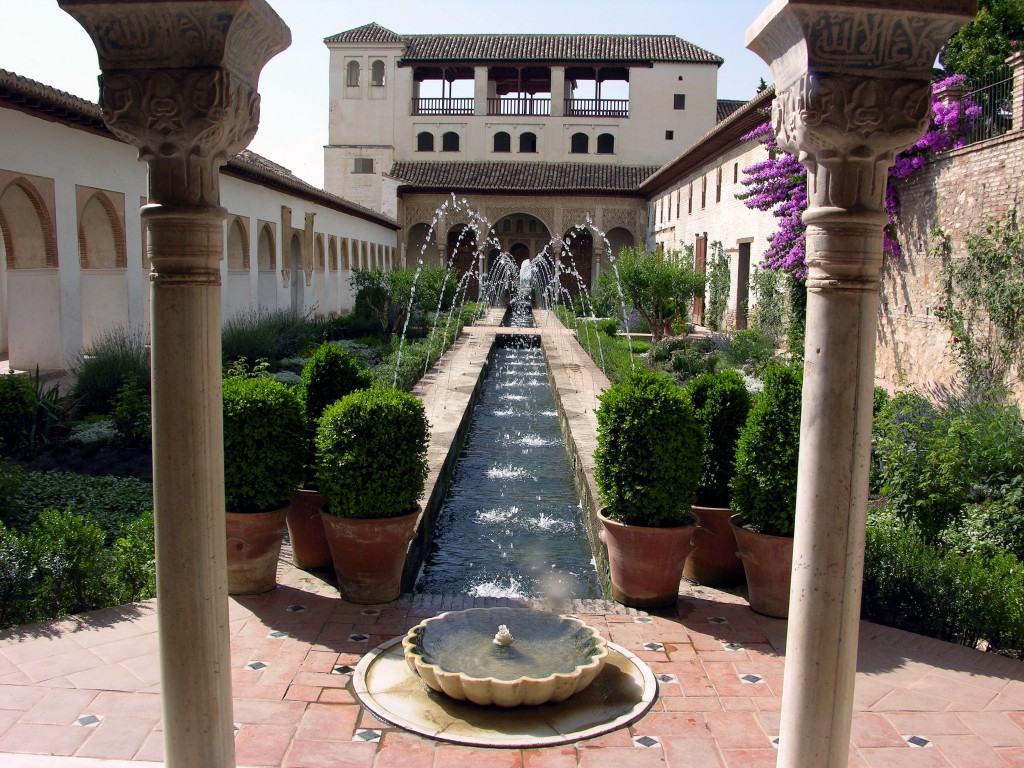 Persian Garden in Spain (Public Domain). The Moors were the primary conduit of bringing this type of architecture into the European mainland following the Arabo-Islamic conquests.
Persian Garden in Spain (Public Domain). The Moors were the primary conduit of bringing this type of architecture into the European mainland following the Arabo-Islamic conquests.
From the time of the Achaemenid empire the idea of an earthly paradise spread to the literature and languages of other cultures. The Avestan word pairidaêza-, Old Persian *paridaida-, Median *paridaiza- (walled-around, i.e., a walled garden), was transliterated into Greek paradeisoi, then rendered into the Latin paradisus, and from there entered into European languages, i.e., French paradis, and English paradise (Oxford English Dictionary XI, pp. 183-84; Yamauchi, pp. 332). The word entered Semitic languages as well: Akkadian pardesu, Hebrew pardes (Nehemiah 2:8; Ecclesiastes 2:5; Song of Solomon 4:13), and Arabic ferdaws (Koran 18.107, 23.11).
 The Taj Mahal, completed by 1648, is also a UNESCO World Heritage site (Source: Public Domain). The master architect of Taj Mahal was an Iranian named ‘Ostad Isaa Afandi’ from Shiraz. The builders were also Persian stone masons, imported from Iran by Mogul Shah Jahan, as per the request of the aforementioned Chief Master Architect Afandi. The white marble for the Taj Mahal was imported from Isfahan. The calligraphy was created by the Persian calligrapher Abd ul-Haq, who came to India from Shiraz, Iran, in 1609. Shah Jahan conferred the title of “Amanat Khan” upon him as a reward for his “dazzling virtuosity”. Another striking Iranian influence can be seen in the design of the gardens and waterworks of the locale. Much of the fauna of Taj Mahal’s Persian gardens were directly imported from Iran. The term “Taj Mahal” is Persian for “The Royal Gounds” or more literally “The Crown Locale”.
The Taj Mahal, completed by 1648, is also a UNESCO World Heritage site (Source: Public Domain). The master architect of Taj Mahal was an Iranian named ‘Ostad Isaa Afandi’ from Shiraz. The builders were also Persian stone masons, imported from Iran by Mogul Shah Jahan, as per the request of the aforementioned Chief Master Architect Afandi. The white marble for the Taj Mahal was imported from Isfahan. The calligraphy was created by the Persian calligrapher Abd ul-Haq, who came to India from Shiraz, Iran, in 1609. Shah Jahan conferred the title of “Amanat Khan” upon him as a reward for his “dazzling virtuosity”. Another striking Iranian influence can be seen in the design of the gardens and waterworks of the locale. Much of the fauna of Taj Mahal’s Persian gardens were directly imported from Iran. The term “Taj Mahal” is Persian for “The Royal Gounds” or more literally “The Crown Locale”.
Although the concept of a paradise may be traced back to the Sumerian epic of Gilgamish (Kramer, pp. 147-49), it seems the idea existed independently in the Indo-Iranian tradition, where we find references in the Avesta (Yt. 22.15).
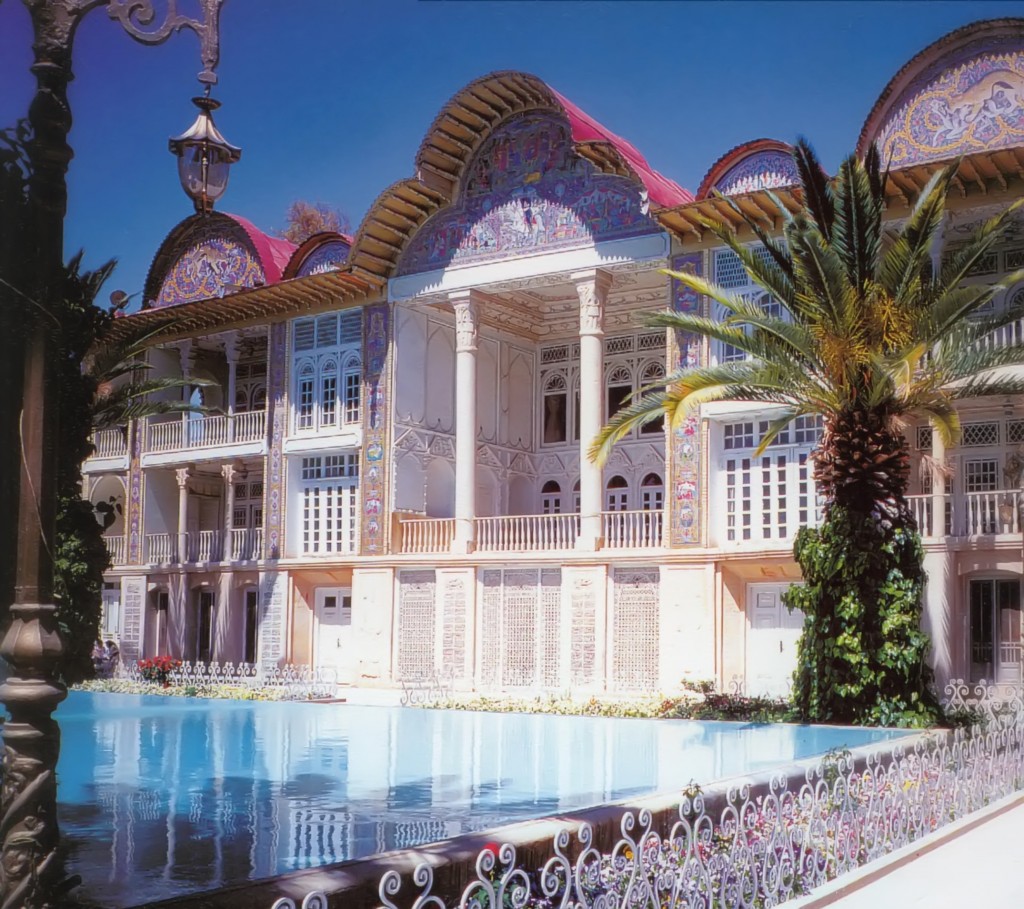 A Persian Garden at Eram in Shiraz, Iran; also known as the Eram Garden باغ ارم (Source: Public Domain).
A Persian Garden at Eram in Shiraz, Iran; also known as the Eram Garden باغ ارم (Source: Public Domain).
Bibliography
A. Giamatti, The Earthly Paradise and the Renaissance Epic, Princeton, 1966.
G. Bazin, Paradeisos: The Art of the Garden, Boston, Toronto, and London, 1990, pp. 12-13.
M. Boyce, Zoroastrians: Their Religious Beliefs and Practices, London, Boston, and Melbourne, 1979, p. 77.
A. R. Burn, “Persia and the Greeks,” in Camb. Hist. Iran II, p. 339.
M. A. Dandamayev, “Royal Paradeisoi in Babylonia,” in Orientalia J. Duchesne-Guillemin Emerito Oblata, Leiden, p. 117.
M. Eliade, Myth, Dreams, and Mysteries, New York, 1961, pp. 59-72.
N. Faqîh, “Ùehra-ye bâgh-e îrânî,” Iran-nâma 4, 1991, pp. 565-88, esp. p. 566.
G. de Francovich, “Problems of Achaemenid Architecture,” East and West 16, 1966, pp. 201-60.
S. N. Kramer, The Sumerians: Their History, Culture, and Character, 1963.
The Zend-Avesta, tr. J. Darmesteter and L. H. Mills and ed. F. M. Müller, SBE 4, 23, 31, Oxford, 1880-87.
E. Moynihan, Paradise as a Garden in Persia and Mughal India, New York, 1979, pp. 1-2, 11, 20, 25.
R. Pinder-Wilson, “The Persian Garden: Bagh and Chahar Bagh,” in E. B. MacDougall and R. Ettinghausen, eds., The Islamic Garden, Washington, D.C., 1976, pp. 70-85.
V. Sackville-West, “The Persian Garden,” in A. J. Arberry, ed., The Legacy of Persia, Oxford, 1953.
A. Sâmî, Pâsârgâd yâ qadîmtarîn pâytakht-e šâhanšâhî-e Îrân, Shiraz, 1956, pp. 75-77.
Strabo, Geography 15.3.7 (reference to a park surrounding Cyrus’ tomb).
D. Stronach, Pasargadae: A Report on the Excavations Conducted by the British Institute of Persian Studies from 1961 to 1963, Oxford, 1978, pp. 107-12.
Idem, “The Garden as a Political Statement: Some Case Studies from the Near East in the First Millenium B. C.,” Bulletin of the Asia Institute 4, 1990, pp. 171-80.
Idem, “The Royal Garden at Pasargadae: Evolution and Legacy,” Archaeologica Iranica et Orientalis: Miscellanea in Honorem Louis Vanden Berghe, Ghent, 1989, pp. 476-502.
A. Tadjvidi, “Persepolis,” Iran 11, 1973, pp. 200-201. A. B. Tilia, Studies and Restorations at Persepolis and Other Sites of Fars II, IsMEO Centro Studi e Scavi Archeologici i Asia, Reports and Memoirs 18, Rome, 1978.
D. N. Wilber, Persian Gardens and Garden Pavilions, Tokyo, 1962.
E. M. Yamauchi, Persia and the Bible, Grand Rapids, Mich., 1990, pp. 332-33.



